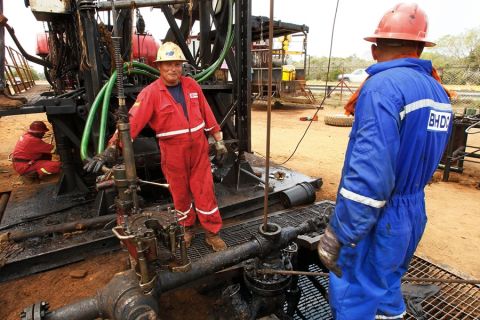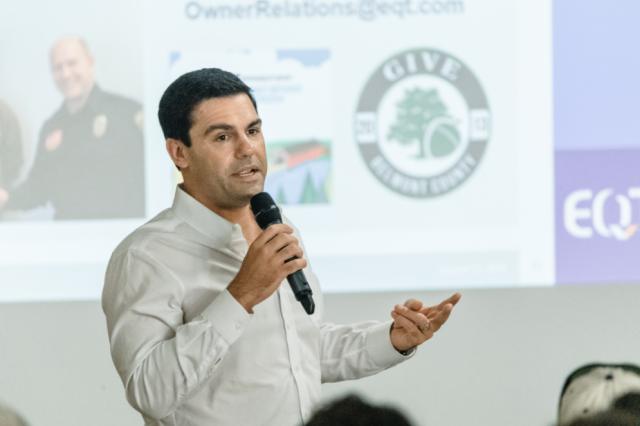
“The technology side has been the biggest push for us,” EQT CEO Toby Rice told Oil and Gas Investor. “At the end of the day technology is just a way for us to communicate better, and we’ve radically changed the way we communicate. We’ve completely changed the way this company works.” (Source: EQT Corp.)
Presented by:

[Editor's note: A version of this story appears in the January 2021 issue of Oil and Gas Investor magazine. Subscribe to the magazine here.]
Toby Rice took the helm of EQT Corp.in July 2019 after leading a band of disgruntled shareholders, including himself, that felt disenfranchised following the Pittsburgh-based company’s acquisition of Rice’s previous company, Rice Energy, in 2017. EQT shares had fallen precipitously since that merger due to operational inefficiencies and cost overruns, Rice and other shareholders claimed. After an 80% shareholder vote to change management of the nation’s largest natural gas producer, the former Rice Energy team became the new EQT team, perhaps the first time in hydrocarbon history the selling company management staged what was essentially a coup to take control of the buying company.
Now, EQT is coming off of third-quarter reporting in which it revealed it has reduced Pennsylvania Marcellus well costs by 22%year-over-year and 47% compared with legacy well costs. Horizontal drilling speeds have almost doubled, increasing by 95%, measured at feet per hour. Horizontal drilling days per 1,000 feet have decreased by 40%. And while equities are down across the oil and gas sector since the takeover, EQT’s share price has returned to about par when the Rice team stepped in, a 90% advantage over peers.
EQT is also in the process of closing its first acquisition under Rice’s tenure, a $735 million parcel from Chevron Corp. announced in late October. The deal involves 580,000 net Marcellus and Utica acres, 450 MMcf/d production and 100 DUCs in waiting. (Editor’s note: EQT completed the acquisition of Chevron’s Appalachia assets on Nov. 30.)
At 37, Rice is a self-proclaimed “shalennial” and is perhaps an unlikely candidate to take charge of the century-old EQT. He did not have prior oil and gas experience before launching Rice Energy, which he started on a kitchen table along with his two brothers. But Rice Energy was built on a digital platform, the native language of millennials, and more innovative than fellow Appalachian E&Ps at the time. It eventually sold to EQT for $6.7 billion.
Rice visited with Oil and Gas Investor in mid-November via video conference.
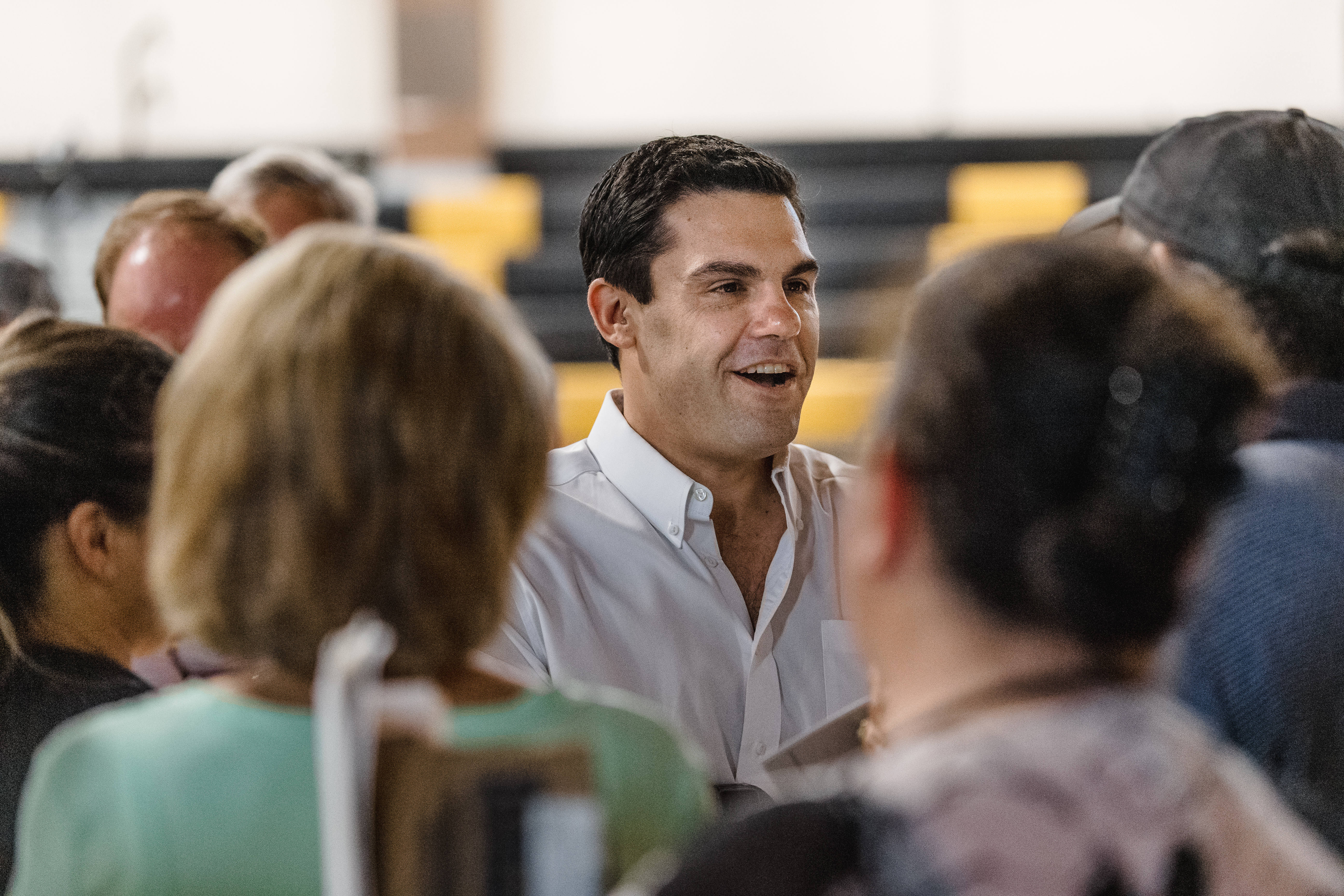
Investor: It’s been more than a year since the new board and management were elected. How would you measure EQT’s transformation since then?
Rice: Our mission was to realize the full potential of our assets and become the operator of choice for stakeholders. Our vision for EQT was to become a modern, digitally enabled operator with vision and purpose. The marker of our success in achieving that mission is defined by our well cost target that we put out at $730 a foot. We hit that in the second quarter, and we’re now at $660 a foot. We’ve radically transformed the organization. We’ve got some of the best leaders across the country that have joined this organization to lead our departments.
And we’ve empowered the workforce to deliver these results. The same workforce that is delivering these results is the same workforce that was with the organization when they blew budget by $300 million. So we’ve added great leadership, but we’ve unlocked the potential of these employees.
Investor: When you took control, what were the first changes you implemented and why?
Rice: We spent months beforehand diagnosing the issues and then coming up with a plan that was going to address them, and that was outlined in our 100-Day plan. The goal was to transform from standalone one- or two-wellpad development to large scale, combo development. To make that happen we needed to focus on planning and being great at project management. We brought in evolution leaders, proven leadership, to sit on top of it. Then we did a restructuring and streamlined from 48 departments down to 15.
The technology side was another part. It started with implementing the digital work environment, having people understand that we were going to migrate from siloed forms of communication, like email, to transparent forms of communication in our digital work environment.
Then we brought in the core critical processes needed to illuminate an operations schedule. That is the backbone. That’s what we call critical utilities. These are just the business processes that we’ve electrified that allow us to execute in a digital work environment.
After that, we worked on culture, which is really just preaching what we focus on. That was to get alignment throughout the organization and making sure people understand their pieces of it.
Investor: What, specifically, is a digital work environment?
Rice: The technology side has been the biggest push for us. At the end of the day technology is just a way for us to communicate better, and we’ve radically changed the way we communicate. We’ve completely changed the way this company works.
You can think about it like a Facebook for work. This allows us to bring radical transparency to the organization. Why? So that we can plan better. As CEO of EQT I get less than a dozen emails a day from EQT employees. Now all those conversations are focused in our digital work environment, categorized in the right areas of our business processes or on dashboards. It’s focused the organization to execute on those things that matter.
At the core of our digital work environment is an environment where we can all plan. Our operating schedule is the backbone of our organization, and then land, permitting, drilling, completions, production, midstream, commercial—they all have their deadlines from that backbone. Everybody works toward meeting their timelines. That’s all got to be coordinated from a timing perspective. You need about 450 different operations, services and service providers to go from building a site to having gas producing into a pipeline. And as we get hit with roadblocks, we can swarm and huddle and change the plans and everybody stays in sync. It’s an incredible exercise, and our digital work environment streamlines all of that. It’s really just a big planning tool that we leverage for communications.
This allows us to transform our operations. The biggest thing we wanted was to get to combo development. So we’re moving from setting the table for one pad to drill two or three wells to setting the table for four to five pads where we’re drilling four to six wells off each pad. So you go from planning for four wells to planning for 25 wells. You have to be really great at planning.
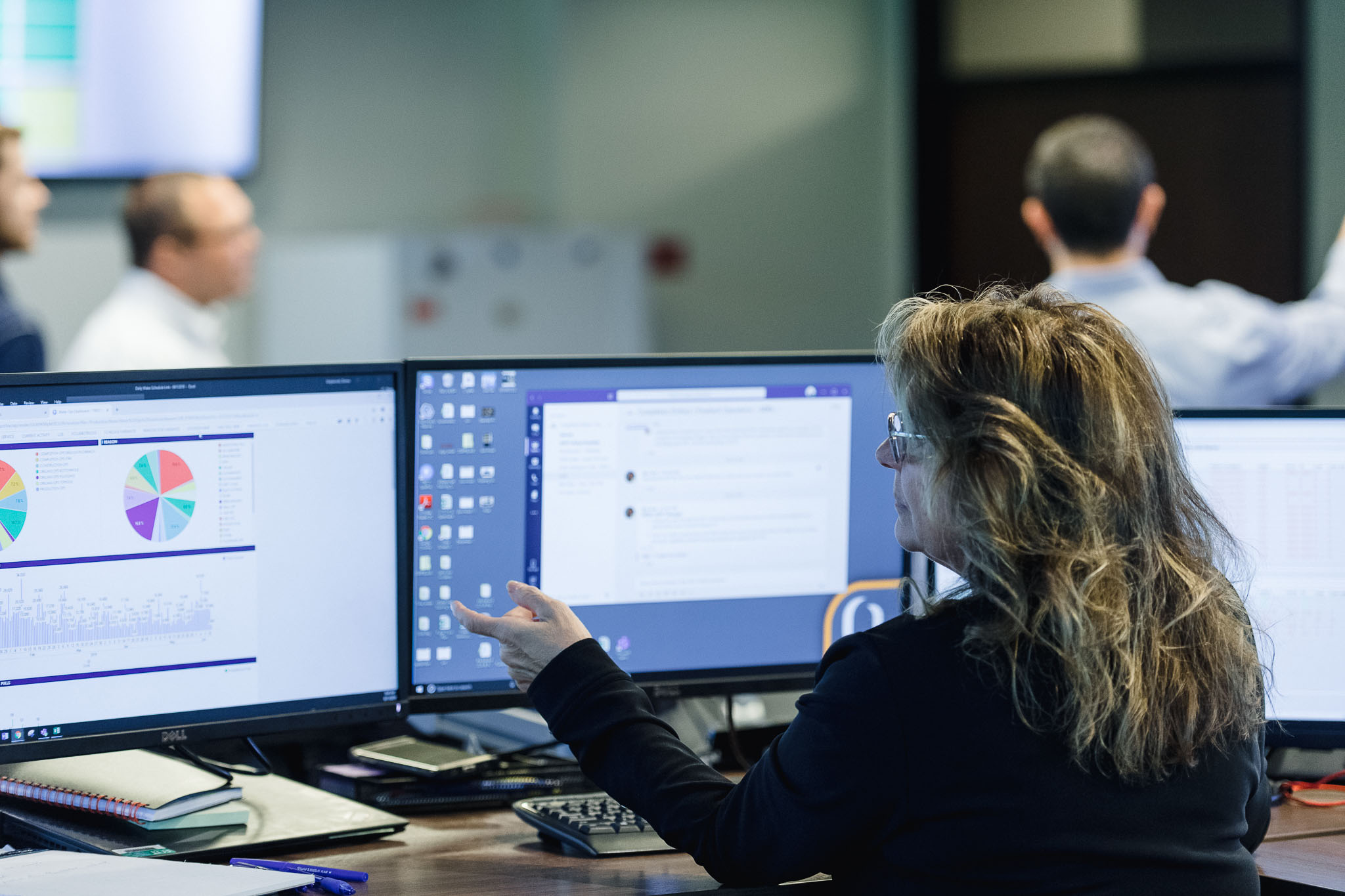
Investor: How did EQT respond to market circumstances caused by the pandemic?
Rice: One of the most surprising things has been this work from home experience. It has been absolutely transformative to our organization. Had this happened when we just got in and everything was manual and there wasn’t a lot of connectivity, this would have crippled EQT. But because we had nine months to build our digital work environment; working remotely was a seamless experience.
And, actually, our productivity per employee has skyrocketed. With these tools, we can see how many pieces of title the title team can produce every day, or how many cases one of our landowner relations people can close every day. It’s really cool to be able to see every pocket of the organization.
And their productivity goes up. Ninety percent of individuals say they’re more engaged now in a work from home experience. I think this is going to be something that makes us question the way we work in the future. Like I said, we’re a digital company, and this company has proven that we have the ability to do that, which demonstrates the scaling potential this business now has.
Investor: What about from an operations perspective? Did you drop rigs or curtail production?
Rice: We’ve always said that the driver of our activity levels is the resources we need to achieve maintenance production. So we’ve cut rigs from six down to three, but that decrease in rig count is not because we’re changing activity. We’re not changing our production levels. It’s because we’ve doubled the efficiency of our drilling performance, so we need half the rigs that we normally needed when we stepped in here. Same thing on the completions side.
With our production, we shut in over 65 Bcf of gas [in 2020]—and we’re still meeting our production guidance. That’s because we’re operating more efficiently on the production side. We’ve gone from 85% uptime to now we’ve jacked that to 98% production uptime. So by operating more efficiently, the production and operating teams were giving us this excess production. We had a decision to make: Do we take this extra production and put it into the market, or do we save this and put it into a market that is going to be at higher pricing? So we’ve made the decision to shut in one and a half Bcf a day gross of gas, about a Bcf a day net.
Going forward, we will continue to use curtailment strategically to capture incremental value when the opportunity presents itself. It’s a tool that we’ll use because we do believe that prices will be higher in the future, which is one of the higher rate of return things we can do. It’s another example of how an organization can leverage its scale if you’re connected. We’re pushing buttons in the office and shutting in all of that production in less than an hour and turning it all back online in an equal amount of time, because we’ve got the digital oil field complementing our digital work environment.
Investor: What was your motivation to take on the Chevron deal at this time?
Rice: The Chevron deal marks the transformation of EQT. The company has captured a lot of efficiencies, and we’ve transformed EQT into a modern digitally enabled operator. We’re big believers that opportunities will present themselves to continue to do what we’ve already been doing.
Chevron was an opportunity that was quite simply the right fit at the right price. It was accretive on a free cash flow per share and NAV per share basis. It was also deleveraging to our business, so it was a very easy deal. For those reasons it was well received by our shareholders. And we’re happy to start leveraging the team and the technology in our digital work environment to integrate these assets and realize the value of this transaction.
Investor: A large portion of Chevron’s holdings are east of your core acreage. Do you feel like the Marcellus core is moving eastward?
Rice: Nothing competes with our core combo in central Washington and Greene counties and in northern West Virginia. There is a chunk in West Virginia, in Marshall County, which is an area that we think is pretty exciting. But if gas prices rise to north of $2.50 long term, we think that these undeveloped locations could be worth some money. That’s when this inventory will start to have some value.
Investor: Are you planning to move any rigs onto this new acreage?
Rice: Our approach to these assets is to continue to maintain production, which is about 450 million [barrels] a day. One thing that came along with the deal was about a hundred work-in-progress wells where there’s been about $270 million invested. So our plan over the next four or five years is to turn online and finish completing those wells in progress. Just by doing that we’ll keep production flat.
We’re not going to have to add rigs or frac crews. The drilling and completion teams have increased their efficiencies in drilling wells so much faster, drilling more wells per rig, and fracking more stages per crew. We expect that efficiency to continue, and those efficiency gains will leave room for us to complete the 20 to 25 wells [per year] in progress from the Chevron assets without having to add any new equipment, which means we can leverage the same teams, the same head count and capture synergies on the G&A side as well.
Investor: How many rigs are you running currently overall, and what are they targeting?
Rice: We’re running three to four rigs right now and two frac crews. That’s an activity level that we’ll continue to maintain through our maintenance program. We’re focusing the majority of our development in our Pennsylvania Marcellus in ’21, and about 20% of our activity in northern West Virginia.
Investor: Does the Ohio Utica compete for capital?
Rice: To be honest, the advancements that we’ve made on our Marcellus program have been so compelling that it’s tough for us to see the Utica competing at this time.
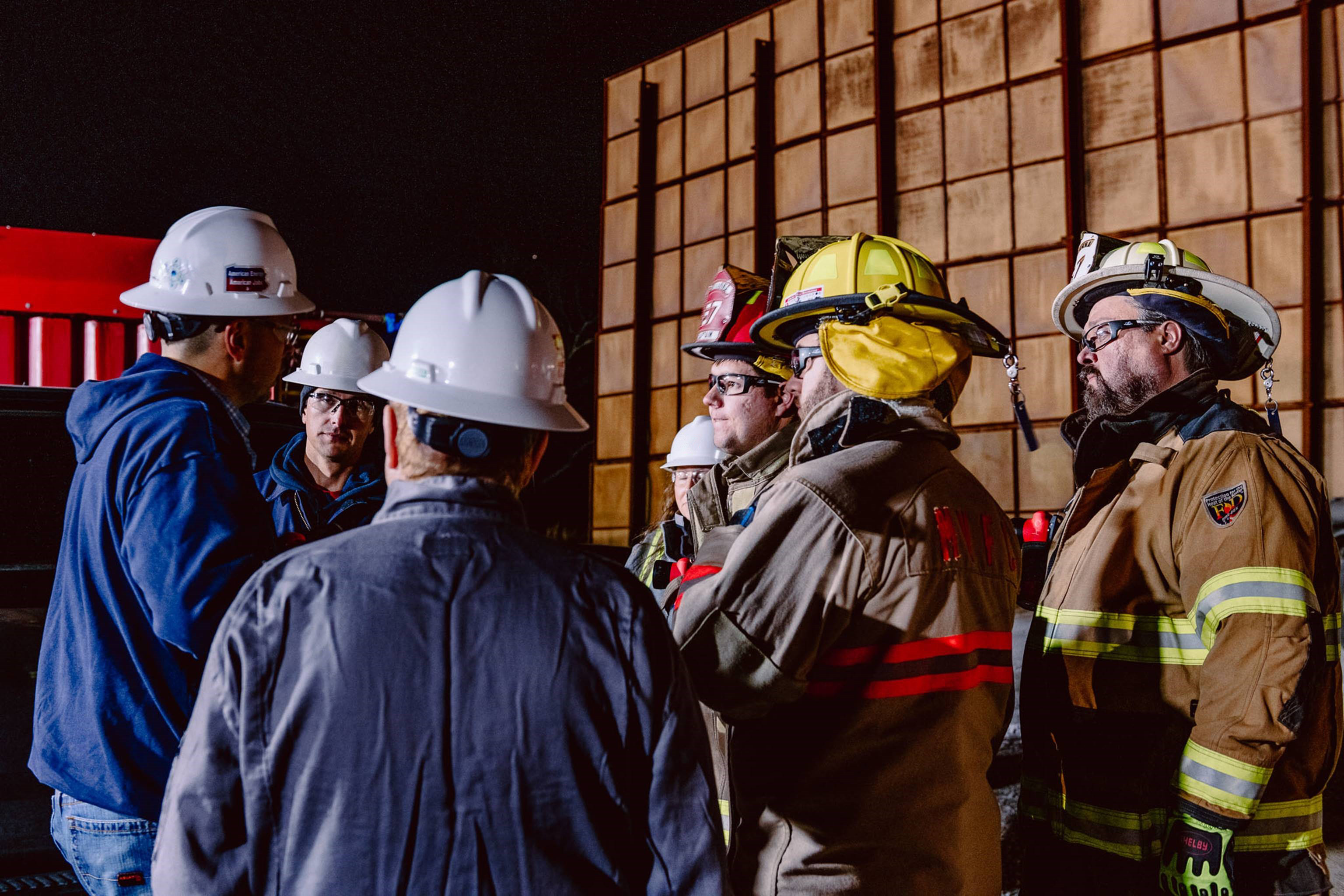
Investor: How do you view this broad push by the investment community for consolidation?
Rice: There’s a tremendous amount of value to be had from consolidation, but I think you have to take a step back and look at the industry to really understand the prize there. EQT is not unique in our ability over the last year to pull a tremendous amount of costs out of our business. A lot of other operators have reduced G&A and increased their operational efficiencies as well. And that’s great.
But when you step back and you look at Appalachia as an example, you’ve got a lot of efficient organizations, but we have 50 operators running 30 rigs. And when you look at the basin as a whole, you can see very clearly that a lot of efficient companies together operating at these levels of activity is not efficient. So there’s value to be gained from having a larger presence from one operator.
The other part is I think this industry is going to struggle a bit with innovation. Everybody has pulled back from an activity level standpoint. If you’re only doing 10 wells a year, how much science can you actually do? How much new technology can you bring to the program?
At EQT we’re running over a million horizontal feet through our system every year. We still have a very robust science program we’re delivering; we’re able to put in play a lot of amazing technology. It’s going to be this innovation, this technology, that is going to allow us to continue to separate on actual well performance, both on the increasing productivity and also reducing costs. So we feel like bigger organizations, if they do it the right way with a digitally connected organization like EQT has, actually get better as they get bigger. So we think that innovation will be another way that we can leverage from scale.
I think investors certainly have an appetite for companies that can operate at a larger scale, not just simply for the sake of scale, but because there is real value to be created. When you look at what we’ve done at EQT, taking advantage of our scale, there is real value that we’re creating. We get more reps on the wells that we execute, which gives us more opportunities to improve operational performance and to have access to cutting-edge technology like our electric frac fleets that you can only put in if you have a stable operations schedule. Having a large operating footprint and a large gathering system gives us access to a lot more markets. On the balance sheet side, having an investment grade credit rating is something that’s going to be a differentiator as well.
So I think investors are right in having the desire for larger scale companies that can take advantage of that scale and create value for shareholders. It’s a theme that we should look forward to.
Investor: What do you see as EQT’s role in the ongoing wave of consolidation?
Rice: We think that the companies that should be developing these wells are those that have the lowest well costs, lowest G&A and the best marketing capabilities—those that have a track record of proving they can operate efficiently at scale. Those are the natural owners of these assets. Everything we do every day is aligned to making us the natural choice. So we want to position ourselves to be the best option for that.
I think people recognize that operating at scale is not as easy as some people think. It’s the whole reason why we’re here. Companies typically get worse as they get bigger; they get less efficient. But for us at EQT, we’re actually getting better as we get bigger.
We think there are a lot of opportunities given our existing scale. Chevron is a perfect example of that. We’re going to integrate this asset in less than two weeks. We can do that because we’ve got all the work that we’ve done over the past year—building the digital work environment, getting the right leaders in place, building the operating model—that can efficiently translate strategy into results. The Chevron deal is going to be a good example of us flexing that operational muscle and showing people that we can actually deliver the results that we say we’re going to deliver.
Investor: Is EQT looking to add scale through a merger?
Rice: While we believe there’s a ton of value to be created, one of the core tenants that we will stay disciplined to is it’s got to be a deal that is accretive on free cash flow per share, NAV per share and continue to deleverage our business.
But the industry is in maintenance mode and not a lot of people are thinking about production growth. That’s certainly true for EQT, but we remind our employees every day that just because we’re not growing production doesn’t mean that we’re not a high growth business. We are a high growth business, but what we’re growing now is free cash flow per share for our shareholders. So we think that consolidation will be one of the ways that we can increase our growth of free cash flow per share. We’ve done that with Chevron, and we’ll continue to stay disciplined looking in the future as well.
Investor: Has EQT had discussions with other operators, including CNX Resources, regarding merging, as media rumors have suggested?
Rice: We don’t really comment specifically on deals, but Appalachia is a small place. We all know each other; we all have conversations. So I think people recognize that scale is going to be the next viable opportunity for us to create value for shareholders.
Investor: How does the E&P business win investors and capital back into the space?
Rice: It starts with trust, doing what you say you’re going to do. Specifically, that means delivering the returns that you say you’re going to deliver. We’ve got to prove that shale works. The biggest challenge that we’ve had is operators for years saying that they’re delivering 50% to 80% rate of returns on their wells, but their balance sheets don’t reflect that.
Doing what we say we can do is one of the reasons why we’ve outperformed our peers by 90% as a public company. In the last year and a half, you’ve seen us continually meet and exceed the guidance that we put out. So, number one is maximize the returns you can deliver.
The second thing is ESG. Delivering results is not good enough anymore; it’s about how you deliver those results. ESG performance we think is going to be a differentiator that investors care about. And we certainly believe the benefits of a strong ESG performance is going to be a key to long-term value creation for shareholders. It’s just another thing that you need to bolt on to your business.
For us, how we operate is defined by our ESG principles. And this is something that we’re really excited about promoting because we feel like it’s another way for us to differentiate ourselves from peers.
We have one of the lowest methane emissions intensity levels across the entire country. Give plugs to our peers, Appalachia is one of the best places environmentally to produce natural gas. It lets people understand that we are the hydrocarbon of the future. This is the key to achieving a lot of the climate goals, so I think that positioning ourselves on an ESG front is going to be equally as important.
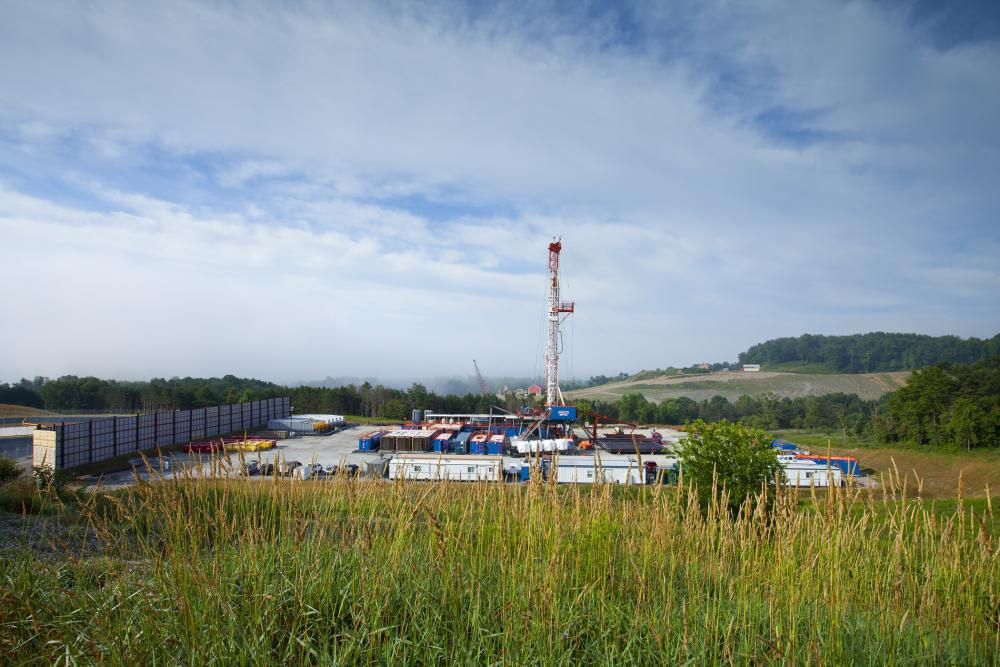
Investor: What are you doing to lower emissions?
Rice: We’re at a great starting point. In our ESG report, we’ve outlined about 660,000 tons of CO2 equivalent emissions per year. Sixty-five percent of our emissions are coming from apiece of production equipment, a pneumatic valve. We’re going to replace those valves on any new wells going forward with electric valves that don’t emit any methane. The cost of that technology is going to be a pretty decent dollar, but it’s a little bit over a dollar a foot, and we’ll do that all day long.
The remainder of our emissions are coming from our combustion equipment. We have a company initiative that we’re running called “electrify the oilfield.” There are two aspects of this. One is to stop burning diesel in the field. Now we’re running electric frac fleets, hybrid drilling rigs and electric wire lines. With our electric frac fleets, we’ve eliminated the consumption of over 15 million gallons of diesel burn just [in 2020] alone. There are a lot of things that we’re using now that we’re converting to electric.
The second part of electrifying the oilfield is bringing out the sensors and digitizing the oilfield to complement our digital work environment. Those digital sensors allow us to jack our operating efficiency. We can drill wells in half the time and that means that’s half the diesel we use. So we’re pretty excited about making significant progress on the environmental side, both on the methane emissions and on the combustion side.
Investor: Is the investment justified while trying to lower costs?
Rice: For us to be able to say we’re going to eliminate the major source of our methane emissions, even though these methane emissions are very small to begin with, by adding a dollar afoot to our well costs, that’s a tremendous improvement in our environmental performance and that price makes a ton of sense for us to do. Keep in mind that our well costs are $660 a foot.
There are going to be decisions where we’re going to have some higher dollars that may be a little bit tougher to justify. In those situations we’re going to come back to our values and our values being trust. We want people to know that we’re doing things as green as possible while being good stewards of capital.
We don’t think those things are mutually exclusive, and we’ve shown that we can do both. It just takes a little bit more effort. We’ve got a very large dedicated environmental team at EQT that spearheads our initiatives, but with the digital work environment we’ve completely integrated ESG into everybody’s workflows. So, it’s not just five executives and 30 environmental people, it’s 600 employees thinking about ESG.
Investor: What balance are you trying to achieve between production growth and returning cash flow to investors?
Rice: Our focus on capital allocation is really centered on hitting our leverage targets, being below 2x [debt to EBITDA] and getting to investment grade metrics. So all of our discretionary cash flow is going toward achieving the balance sheet that we want to produce.
But once we get there, which will be in a very short period of time, we will have a decision to make: Do we continue to delever the balance sheet, which we may consider, start thinking about shareholder friendly opportunities or think about production growth?
I don’t think that production growth is going to be high up on the list. But if we did see a very compelling strip that has some depth to it that we could hedge at attractive prices and lock in the returns for the extra growth, then we will consider growth. Growth for us, however, would be moderate, probably zero to 5%. It’s not going to be like the old days of 20% or 30%, so it will be very modest growth if we do grow.
So hitting our leverage targets in ’21 is going to give us the ability to make that decision. We could be returning capital to shareholders as early as 2021.
Investor: Do you have an absolute debt target?
Rice: To be at investment grade metrics we need to get to around $3.6 billion absolute debt. We’re at $4.6 billion now. We’re going to be able to get there through free-cash-flow generation this year. We’ve also got the E-tran [Equitran] midstream assets, and some other noncore asset sales potentially to do. But for the most part we can get there just by executing our business plan and generating free cash flow.
We’ve refinanced a significant amount of our debt—$1.7 billion—starting in January [last year]. We had a $3.3 billion maturity wall that we were facing in 2021 and ’22. We’ve gotten past that, so we’ve got what we need. It’s really just coming down for us to execute. We were able to access the markets for the Chevron deal. Our equity was priced at a 4% discount where we’ve seen some peers price equity recently at a 20% discount.
We were able to raise $350 million with a 5% coupon. So the markets have been there, though I do think that’s a little special with EQT. I think people get the story that we’re building a future-driven company and are excited about it.
Investor: Are you aiming for a percentage target of free cash flow?
Rice: Someday I want to be able to tell our investors that these assets are generating a billion dollars a year of free cash flow, although we’re not prepared to go out there and make those statements today. We are still a rate of change story. We’re still finding ways to boost our capital efficiency. We are working aggressively every day to hit that target.
Higher gas prices will certainly help that. Every penny that the gas price goes up, that increases our free cash flow by $16.5 million dollars. It’s pretty amazing to think of the scale. EQT offers unparalleled exposure to natural gas, and we think that provides an exciting opportunity for investors.
Investor: What’s your outlook for natural gas?
Rice: We’re pretty constructive on gas prices. The key is to recognize the mistakes that this industry has made in the past. I don’t think people will be chasing short-term pricing for natural gas. People will take a little bit more of a disciplined approach with the fear of the unlimited wave of associated gas off the table as long as oil is sub $50. That gives more control back to and reliance on the Marcellus and in Appalachia to be the lowest cost producer.
What will create the most value for our shareholders is getting our assets valued at agas price closer to $3 than $2.50. The key to that is just being disciplined and focusing our efforts on running an efficient business—cutting as many costs out as possible and driving free cash flow through efficiency gains, not through production growth.
That type of environment would lead us to see long-term gas prices north of $3. For consumers, there’s really not much difference between $2.50 and $3, but for this industry it is a world of difference. You can generate so many more returns. And, quite frankly, I think it’s going to be something that is going to strengthen our industry and allow us to achieve some pretty ambitious plans when we start talking about helping solve global climate change goals.
Investor: Do you think the call for an energy transition will push out all hydrocarbons, including natural gas?
Rice: I think natural gas will continue to play the leading role in our energy future if we take a commonsense approach to the value that natural gas brings. Natural gas has a proven track record of providing reliable, affordable electricity. We have an abundant resource base to give confidence that we’ll be able to continue doing this for decades—maybe centuries—to come. It’s a proven solution.
Also, under a Biden administration, there’s probably going to be a lot more retirement of coal plants. Twenty percent of our electricity still comes from burning coal, so there’s a tremendous market opportunity for natural gas and renewables to take on that market share. We’re certainly ready and able to pick up any slack that would come with coal retirements. Natural gas is the reason why air emissions in the United States have dropped to the lowest level since the 1990s.
This [presidential] campaign has shown us that energy is important. It got a lot of airtime, and that’s great because people take for granted the work that we do as energy providers. You don’t see us; you just flip the light switch, and it’s there. Now people are talking about it, and we have our eyes set on expanding the market for natural gas.
Air emissions are a global issue. On a world basis, around 38% of electricity comes from burning coal. That’s a massive market for us to be able to replicate exactly what we did here in the United States but do it on a global scale. And we’ve got the tools now, finally, with a robust LNG economy. We’re delivering over 11 Bcf a day internationally [of domestic exports] and meeting the climate goals of not just the United States, but of the world. And we think that’s a tremendous opportunity. It’s one of the reasons why we’re excited to be the nation’s largest natural gas producer, because we think we can really help the world.
Investor: The Obama administration called natural gas a bridge fuel, suggesting it was a temporary solution, and now the incoming Biden administration has promised to work toward phasing out all hydrocarbons. Are you concerned?
Rice: People call natural gas a bridge fuel, but call it a long bridge because we definitely see a long future with natural gas. As long as we’re burning coal to create electricity, there’s a need for gas. As long as there’s a deadline to meet air quality standards, there’s a need for natural gas. There’s just no other resource that can meet the demand of decarbonizing our energy economy faster and more efficiently than natural gas. Everybody’s starting to talk about energy. This is our opportunity to shine and talk about all the great things that we do.
The need for natural gas is going to be there. With the push to cleaner energy options, there needs to be something that provides a reliable energy option. Until battery storage or hydrogen [become viable], which is a ways off, natural gas is the only proven solution and the only solution that can be deployed at scale to meet the growing energy needs of this world. The reliability, availability and cost benefits of natural gas are unquestionable, and we think as people start to look at the data, there will be a decoupling of natural gas from other fossil fuels as it pertains to environmental and socioeconomic benefits.
The other thing that we need to be thinking about is the fact that there’s over a billion people in this world that don’t have access to electricity, and that should get us as motivated to solve that issue as it does to solve our climate issues. That’s the social aspect of what we do, and one of the reasons why we got back into this.
It’s one of the things that drives me, the higher purpose that we’re bringing to this organization, a deep understanding that energy consumption is the driving factor behind human progress. The more energy people use, the longer people live. What we do is such a good thing for the world, and we’re passionate about what we’re doing, this path of delivering these benefits to people around the world.
Investor: With all of the challenges facing the industry today, and considering your successs is rooted in a start-up, what advice would you give to someone looking to start their own E&P company for the first time?
Rice: When you’re thinking about starting your own business, you need two things. You need to have an edge, and you need to have an opportunity to play that edge. A lot of times I hear entrepreneurs say their edge is their grit, their drive and their commitment to work a hundred hours a week. Guess what? That’s not an edge. There’s a lot of guys like us that have that.
You need to be doing something differently. That could mean looking at a different place that other people aren’t focusing on. It could be a different technology. That’s how Rice got started. Our edge was the ability to unlock reservoirs with better hydraulic fracturing technology. So you need to have an edge.
One of the things that’s happening in the industry today is companies are getting bigger. As private guys, there were always opportunities because larger companies would leave crumbs behind, but companies are starting to learn how to leverage technology, and it’s going to make those types of opportunities tougher to find.
But we certainly need to continue to have people that think outside the box. Think about the world differently. That certainly was a strength of ours, coming in as an outsider, questioning the way that people ran the business. We turned that into a strength, so don’t be discouraged.
Investor: What do you expect EQT to look like five years from now?
Rice: Looking five years out, I want to be able to get up on stage and tell our shareholders that we’re generating a significant amount of free cash flow. I want to be able to show that we’ve consistently grown free cash flow per share year over year. I want to say that we brought stability, that we’ve been able to capture value from opportunities that are inherent within our core operating footprint. And to show them that we’re picking up every penny, nickel and dime that comes in our way.
And then we want to be able to show that we’ve got a strong future as it relates to natural gas, and showcase why natural gas should play a leading role in our energy future.
This organization is positioned to do what we’ve done in the past, and that is outperform. We’re proud of our track record of outperforming peers by 95% in our time as a public company. And I feel like with this platform, this team and this base of assets, the table is set for us to continue that track record.
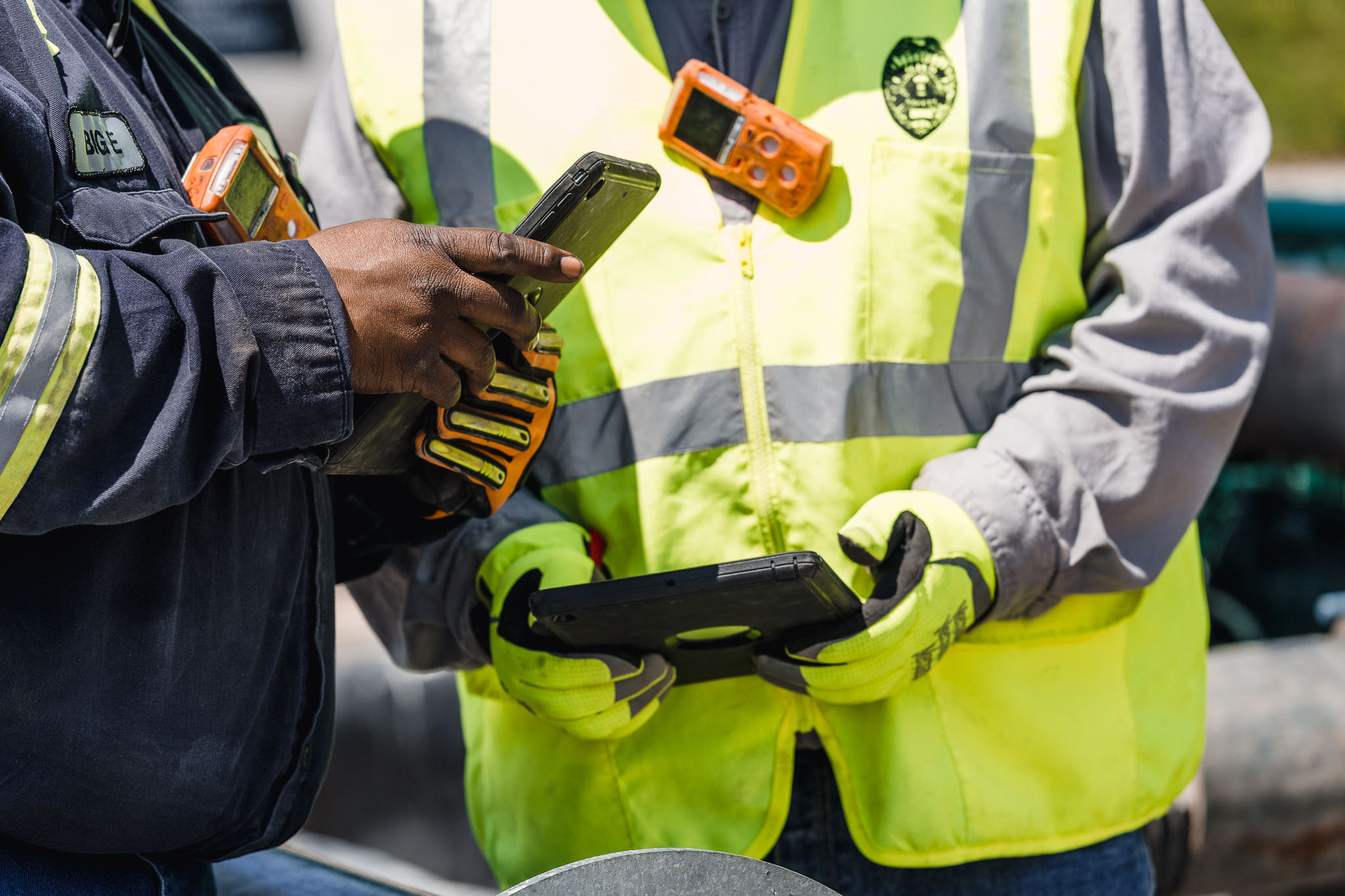
SIDEBAR:
How EQT Cut Costs By 47%
The day after he was installed as CEO of EQT Corp., late in the evening, Toby Rice visited the company’s remote drilling operating center in Canonsburg, Pa., south of its corporate headquarters in downtown Pittsburgh. He studied the screens of the geosteering team as the data from the wells in progress played across them. “I think you guys need to drill faster,” he said matter-of-factly.
“What are you talking about?” the engineers asked.
“Be safe, but you can drill a lot faster.” And he walked out.
Two days later one of the geosteerers excitedly called Derek Rice, Toby’s brother and a member of the Rice Team, and said, “We’re on pace to drill 6,000 feet today. A good day for us has been 2,000 feet.”
“What happened?” Derek asked.
“Toby came in and said, ‘Drill faster,’ so we removed a weight-on-bit restriction and put more weight on bit.”
Several years previous, EQT had experienced a stuck bit in a wellbore that was determined to be caused by too much weight on the drill bit. Since then, the company had been drilling with a limitation on weight on bit, and the rule was never challenged.“
All of a sudden our drilling performance has been unleashed,” said Rice, recalling the transition his team took during first days in control of EQT. “In the beginning it was just about lifting those types of handcuffs.”
In June, EQT set an industry-first drilling record of 10,566 lateral feet—over 2 miles—in a 24-hour period.
Digital makeover
The Rice Team won the shareholder vote over the incumbent management and board on the promise that it could increase efficiencies and reduce costs, all of which would translate to bottom-line shareholder returns. So far the new management team is delivering those results.
Rewiring the company to be a “digitally enabled operator” was top priority for Rice when he took over as CEO in July 2019. In fact, connecting all data and employees via a digital work environment was his secret weapon for streamlining operations. It was the first thing he did, calling it the backbone for everything else to come.“
“I always said I wanted to be able to run my business from a cellphone,” said Rice. “We want everything to be very mobile.” Fortunately, Rice was able to build off of the digital platform he already designed for his former company, Rice Energy, now a part of EQT. “The secret to our rapid transformation since we’ve been here is because we were able to pick up on all the utilities and technologies that we built at Rice. We just turned it back online, wired a couple of different systems and very rapidly we were sprinting with this technology. And now the EQT workforce has taken that to another level.”
One example: When national lockdowns began due to the COVID-19 pandemic last March, EQT operations did not miss a beat. In less than a day, the company developed an app that enabled the guard shacks at all of its well locations to perform contact tracing on all employees and some1,200 service providers entering the sites daily as part of its check-in program, keeping the drill sites protected from the virus. That app is one of more than 500 digital “utilities” the company has devised to connect all communications and data via a centralized, cloud-based dashboard.
The dashboard—accessible by computer or mobile phone—is based on a Salesforce platform, but all of the different utilities are custom made. Every department and process has its own application. Decision-making analytics are executed within the dashboard.
“Our goal is to have everything in one place. That’s our Nirvana,” he said.
The centralized digital platform translates to operational efficiencies in the field. With the platform in place, now the company can execute what it dubs combo development, in which multiple, contiguous multiwellpad sites are drilled sequentially. Where before drilling four to six wells was the norm, now it drills 20 to 25.
“The problem has been planning,” said Rice. One of the biggest challenges of shale is the logistics, and combo development multiplies logistical challenges. Rather than planning development on 400 acres, now it’s on 4,000. Rather than needing to clear 100 pieces of title, the effort may jump to 1,000. Millions of gallons of water, millions of pounds of sand and hundreds of pieces of equipment must be coordinated to be available and on time.
“You can imagine the incredible effort it takes to execute that. It’s a really aggressive scheduling coordination exercise that can only be accomplished with our digital work environment.”
The prize is economies of scale. Bulk pricing for services and supplies reduces costs. Water can be piped rather than trucked. Rigs move 2,000feet versus 20 miles.
“It greatly streamlines operations.”
Field tested
Not all improvements in efficiency have derived from digital technology; some are simply simplifying old methods. The company quickly downshifted from planning logistics for 30 different well designs to one standard design. It upspaced to a uniform 1,000 feet between wellbores.“
Coming in, a big focus was just standardizing the well design and deploying the best design standards to deliver the best economics in the current price environment. We look at 45 different things that need to be optimized, from where to land the laterals, what our spacing is going to be and what the frac size looks like. We streamlined it to produce the best economics.”
The company has achieved a 60% improvement in horizontal drilling speeds year-over-year, “which was accomplished through the continued application of best practices executed by the same crews guided by a stable operation schedule,” Rice said.
With completions, the new team now deploys electric hydraulic fracturing fleets for all operations. In addition to the reduced environmental impact, e-fracs also reduce costs—seemingly counterintuitively. Conventional frac fleets cost less on the front end but require more maintenance than the electric fleets. Like an electric car, e-fracs require reduced maintenance and can thus pump for longer periods, increasing overall efficiency.
“The biggest driver on increasing stages per day is driven by pump time. If you can get 16 to 18 hours (pumping time per day) with a conventional fleet, that’s pretty good. With the electric frac crews, when you eliminate maintenance, it gives us the opportunity to pump 18 to22 hours per day. Our electric frac fleets are really hitting their stride.”
EQT has some 140,000 SCADA points comprising its digital oil field. Sensors monitor pressure, temperature and vibrations while drilling, to list a few, with all data feeding back into the central database. Sensors likewise monitor every piece of the completions operations.
“We can monitor assets and be proactive in addressing any issues before they pop up. We can stack those technologies and start doing neat things like continuously pumping two wells at once. Leveraging that digital oilfield was one of the things we really leaned in on.”
These field sensors are one of the reasons the company was able to boost production uptime from 85% to 98%.
“Leveraging sensors with good engineers focused on things that matter is what allowed us to get this incremental production, and that’s significant at our scale. A 1% or 2% efficiency gain is $10- or $20 million worth of value. That’s exciting for our engineers.”
The centralized data platform has also transformed how the company bids for services. Rather than looking for the lowest price, now with analytics it seeks highest value.
“We’re putting the best technology out there,” said Rice. “It’s going to be more expensive, but we’re going to drill wells in half the time. And when you have a holistic understanding of your business, which the digital work environment gives you, you can make that trade.”
Performance driven
Since the Rice team took over EQT leadership, well costs have declined 47%, from $970 per lateral foot to $660, surpassing the company’s goal of $730. Capex is reduced by 20% year-over-year—while maintaining production guidance. Those results reflect the innovation deployed in the past year and a half, Rice touts.
“That’s what’s driving the operational efficiencies. We’ve made some pretty big strides on the drilling side and on the completion side. The driving force is the continued application of new technology and leveraging our technology to drive operational efficiencies, which drive well costs. We have a good idea of what it takes to execute these wells. We’ll see how much more we can innovate and continue to drive the performance. “I’m encouraged to have an organization that has the ability to evolve and innovate.”
Recommended Reading
Renewed US Sanctions to Complicate Venezuelan Oil Sales, Not Stop Them
2024-04-19 - Venezuela’s oil exports to world markets will not stop, despite reimposed sanctions by Washington, and will likely continue to flow with the help of Iran—as well as China and Russia.
US Threatens to Not Renew Venezuelan Energy Sector License
2024-01-31 - The U.S. Department of State alerted Venezuela that it could decide not to renew General License No. 44 amid what Washington has labeled “anti-democratic actions.”
US Orders Most Companies to Wind Down Operations in Venezuela by May
2024-04-17 - The U.S. Office of Foreign Assets Control issued a new license related to Venezuela that gives companies until the end of May to wind down operations following a lack of progress on national elections.
US Decision on Venezuelan License to Dictate Production Flow
2024-04-05 - The outlook for Venezuela’s oil industry appears uncertain, Rystad Energy said April 4 in a research report, as a license issued by the U.S. Office of Assets Control (OFAC) is set to expire on April 18.




